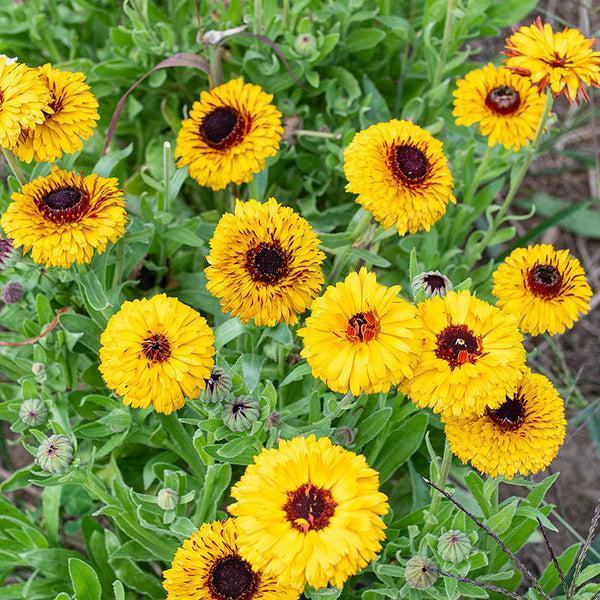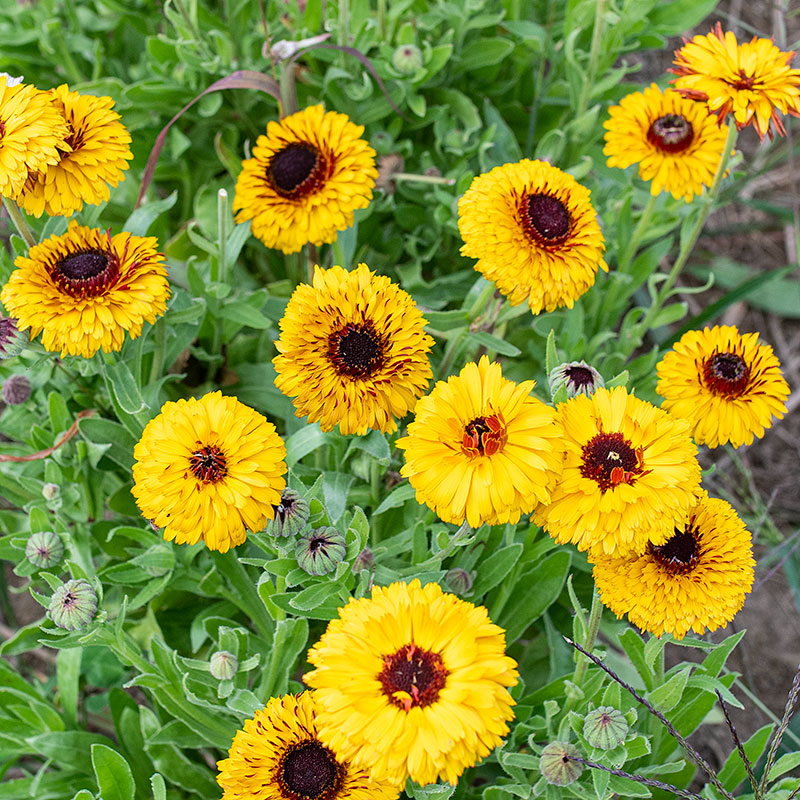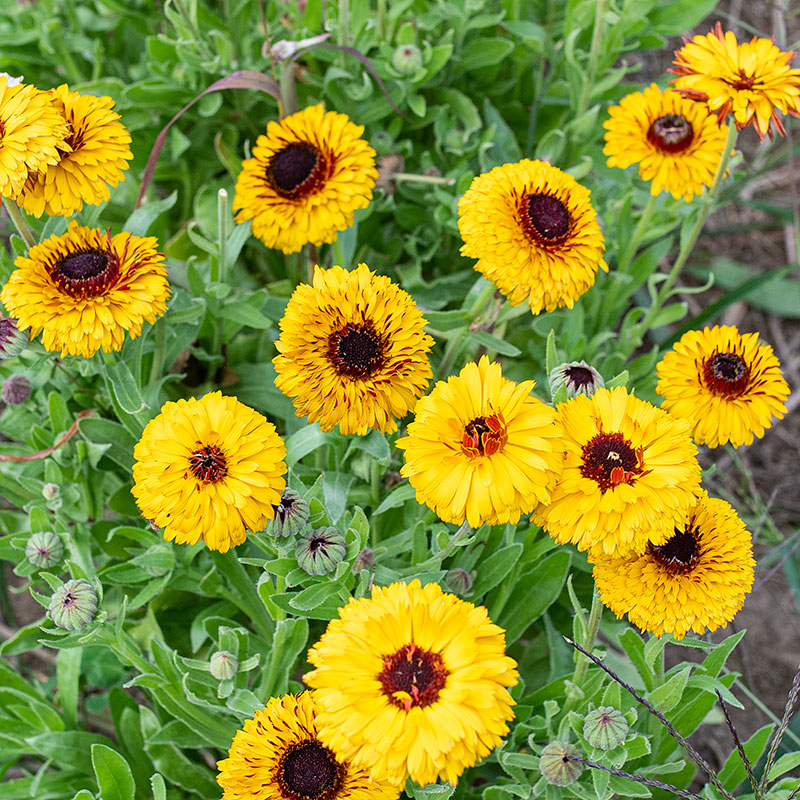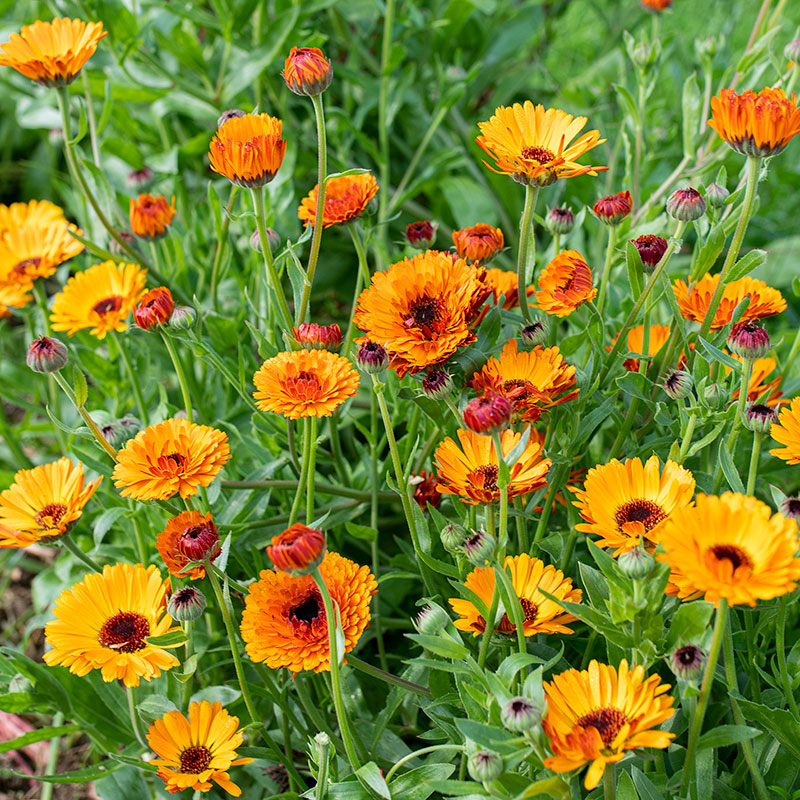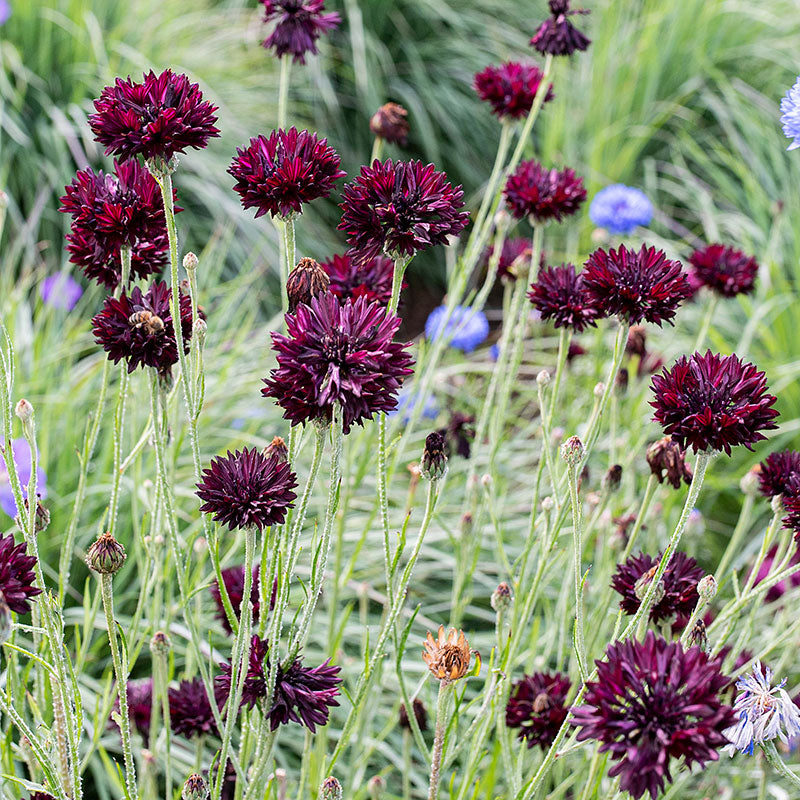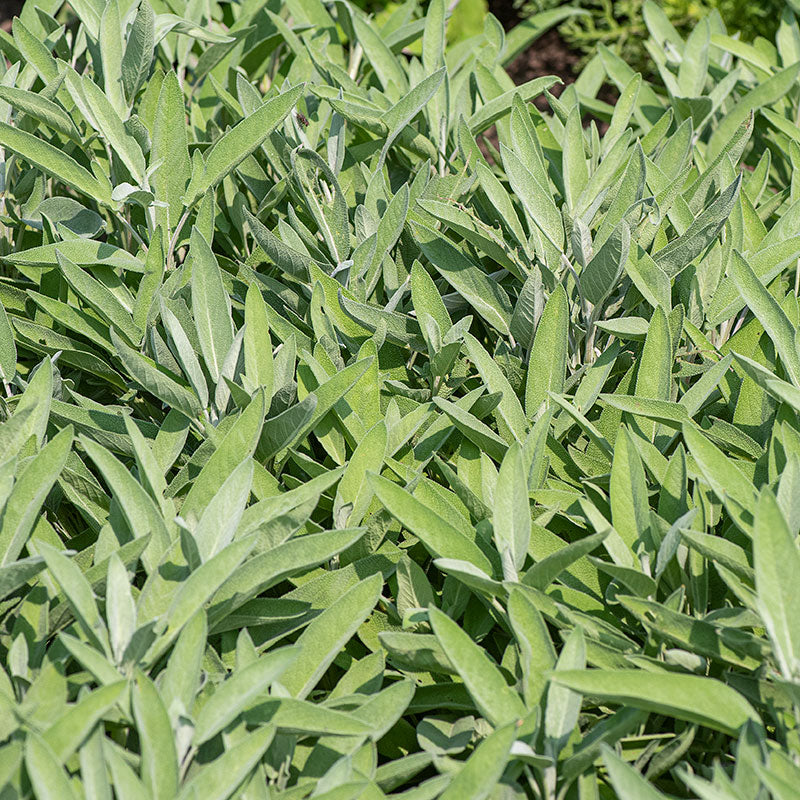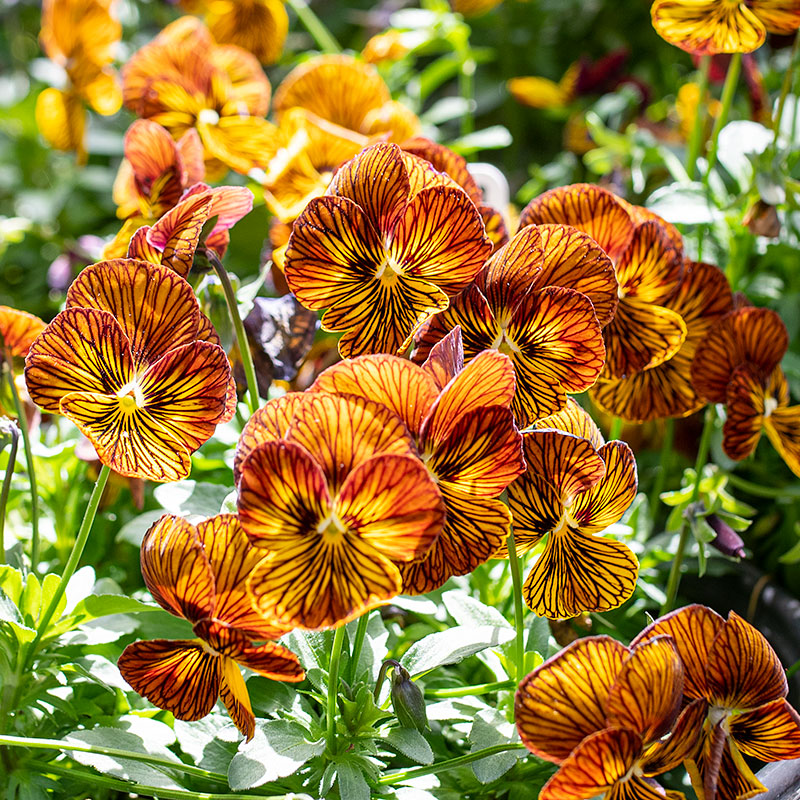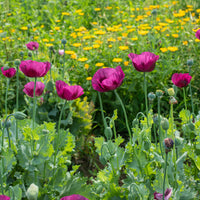SOWING INSTRUCTIONS
Seed To Bloom:
12-14 weeks
Starting Indoors:
Start in containers 4-6 weeks before last spring frost. Germinate at 65-70°F, then grow at 55-60°F.
Starting Outdoors:
Recommended. Direct sow in early to mid-spring, just before the last average frost, and again in midsummer for fall bloom; early autumn only in mild winter areas (zones 8-10).
WHEN TO SET OUTSIDE
In springtime, after frost.
PLACEMENT & CULTIVATION
Calendula is a versatile plant and an age-old favorite flower. It is a classic cottage garden staple, an easy-to-grow selection for children's gardens, a valuable companion plant in vegetable gardens, and an edible and medicinal wonder. It's vividly colored or pastel flowers are lovely in bouquets, especially when paired with cornflowers. Deadheading encourages the plant to continue blooming and prevents it from going to seed too quickly. Calendulas prefer cooler weather, so if they start to flag in the heat, it's best to cut them back by 1/3 and add a side dressing of compost to help them revive and prepare for a fall show—a second sowing in July results in extra large fall-blooming flowers. One of the benefits of calendula is that it often self-sows, so you may find new plants popping up next season.
Watering Details:
About 1" per week, moderate tolerance to dry soils once established.
Soil pH:
Slightly acidic to neutral
Fertilizer:
Mix in 1-2" of compost when planting into low fertility soils.
Diseases & Pests:
Calendula can be susceptible to powdery mildew—prevent by growing in a good airy location. If mildew is detected, treat it with an organic fungicide. Aphids and tarnished plant bugs may be present—control aphids with sprays of water or insecticidal soaps that also control tarnished plant bugs. Snails and slugs may damage young seedlings. If these pests are present, treat the surrounding soil with iron phosphate pellets. The virus aster yellows, transmitted by leafhoppers, is characterized by twisted growth, pale green leaves, and deformed blooms. Pull up and discard and treat the garden for leafhoppers.
When to Cut for Bouquets:
Wait until flowers have fully opened. Disbudding to one main bud on stem will result in larger flowers.






























